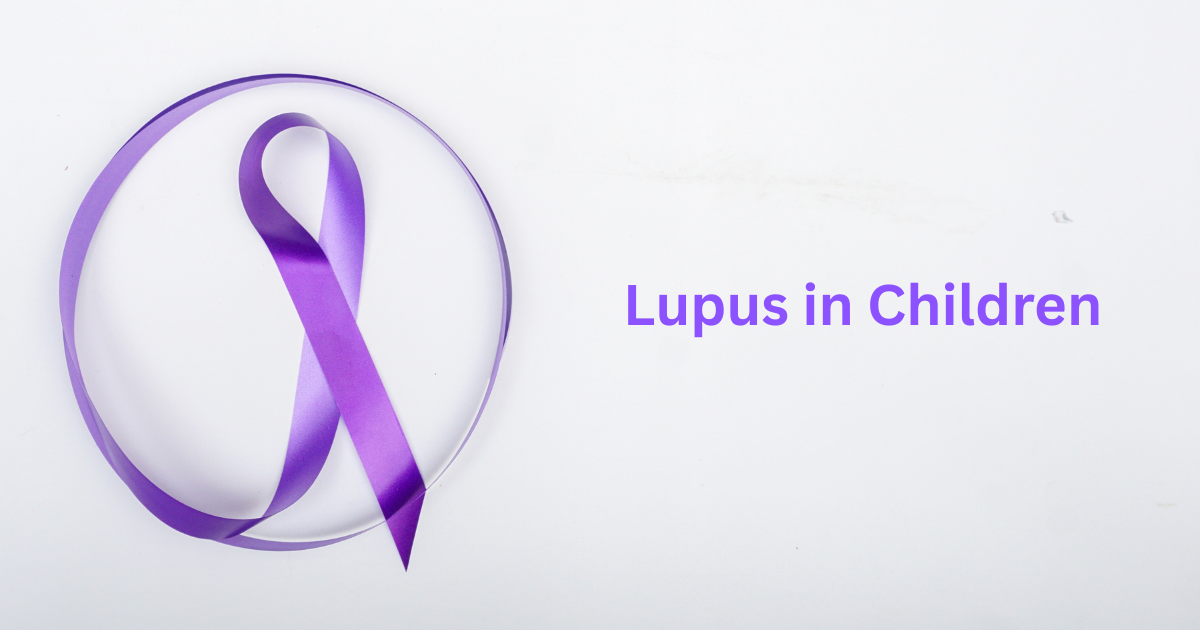Systemic Lupus Erythematosus (SLE), often simply called lupus, is a chronic autoimmune disease in which the immune system mistakenly attacks the body’s own tissues, leading to inflammation and damage to various organs and systems. It can affect the skin, joints, kidneys, heart, lungs, and even the brain. Because the symptoms of lupus are often vague and can resemble those of other conditions, recognizing the early signs of the disease is essential for early diagnosis and management.
In this blog, we’ll discuss the common symptoms of SLE, how to recognize early warning signs, and the importance of seeking medical advice if you suspect lupus.
What Is Systemic Lupus Erythematosus?
Systemic Lupus Erythematosus (SLE) is a chronic autoimmune disease in which the body’s immune system mistakenly attacks its own tissues and organs. This results in widespread inflammation and damage to various body systems, including the skin, joints, kidneys, heart, lungs, brain, and blood cells.
While there is no cure for lupus, early recognition of symptoms can lead to more effective treatment and help manage the condition, reducing the risk of serious complications.
Symptoms of Systemic lupus erythematosus:
The symptoms of lupus can range from mild to severe, and they can come and go, with periods of flare-ups followed by periods of remission. Below are some of the most common symptoms associated with SLE:

1. Fatigue
One of the most common and early signs of lupus is extreme fatigue. People with lupus often describe feeling unusually tired or exhausted, even after a full night’s sleep. This fatigue can be persistent and can significantly impact a person’s daily life and ability to carry out normal activities.
2. Skin Rashes
Lupus is known for causing distinctive skin rashes, with the butterfly-shaped rash across the nose and cheeks being one of the hallmark signs of the disease. This rash, also called the “malar rash,” often appears after sun exposure and may worsen during flare-ups. Other rashes can occur on the body, especially on the chest, arms, and legs. The skin may also be more sensitive to sunlight, which can trigger rashes or worsen existing ones.
3. Joint Pain and Swelling
Joint pain, swelling, and stiffness are common symptoms of lupus, especially in the hands, wrists, knees, and fingers. The pain often comes and goes but can be more pronounced during flare-ups. Unlike other forms of arthritis, lupus-related joint pain does not usually lead to permanent joint damage. However, it can still affect mobility and quality of life.
4. Fever
A low-grade fever is a common symptom in lupus, particularly during flare-ups. A fever that lasts for a prolonged period without an obvious infection should be taken seriously, as it may be a sign of lupus activity. It often comes with other symptoms such as fatigue, rash, and joint pain.
5. Photosensitivity
People with lupus are often sensitive to sunlight (photosensitive), meaning they may develop rashes or experience flares after being in the sun for even a short time. Sun exposure can trigger a lupus flare or worsen existing skin symptoms. It is important for people with lupus to protect themselves from UV rays by wearing sunscreen, protective clothing, and avoiding excessive sun exposure.
6. Hair Loss
Hair loss or thinning can occur in people with lupus. This can happen due to inflammation of the scalp or as a side effect of lupus treatments, such as corticosteroids. In some cases, hair may grow back after the lupus is well-controlled.
7. Mouth and Nose Sores
Ulcers in the mouth or nose are a common symptom of lupus. These sores may be painless or mildly painful and can occur inside the cheeks, on the roof of the mouth, or on the gums. Mouth ulcers are often associated with lupus flares.
8. Raynaud’s Phenomenon
Raynaud’s phenomenon is a condition where the fingers and toes become numb or turn white, blue, or purple in response to cold or stress. This occurs because blood vessels in the extremities constrict, limiting blood flow. Raynaud’s phenomenon is seen in about one-third of people with lupus and is often one of the earliest signs of the disease.
9. Chest Pain and Shortness of Breath
Lupus can affect the heart and lungs, leading to symptoms such as chest pain, difficulty breathing, or shortness of breath. Inflammation of the lining around the heart (pericarditis) or lungs (pleuritis) can cause these symptoms. It is important to seek medical attention immediately if you experience unexplained chest pain or difficulty breathing, as these can be signs of a serious lupus-related complication.
10. Cognitive Issues (Lupus Fog)
Some people with lupus experience cognitive difficulties, often referred to as “lupus fog.” This can include problems with memory, concentration, and thinking clearly. It may feel like being mentally “cloudy” or forgetful. These cognitive issues can be frustrating and can impact daily functioning.
11. Kidney Problems
Lupus can cause inflammation in the kidneys, a condition known as lupus nephritis. This can lead to symptoms like swelling in the legs or feet, high blood pressure, and changes in urine (such as dark or foamy urine). Kidney problems are a serious complication of lupus and require immediate medical attention to prevent long-term damage.
12. Digestive Issues
People with lupus may experience gastrointestinal symptoms, including nausea, loss of appetite, abdominal pain, and diarrhea. These symptoms may be caused by the disease itself or as a side effect of medications used to treat lupus.
Why Early Diagnosis and Treatment Matter
1. Preventing Organ Damage
Lupus can affect vital organs such as the kidneys, heart, lungs, and brain. If left untreated, the immune system continues to attack these organs, leading to irreversible damage. Early intervention can slow down disease progression and reduce the risk of complications like:
- Lupus Nephritis: Kidney inflammation that can lead to kidney failure.
- Cardiovascular Disease: Increased risk of heart attacks and strokes.
- Lung Involvement: Inflammation leading to breathing difficulties.
2. Reducing Flares and Symptoms
Lupus symptoms, such as joint pain, fatigue, and skin rashes, occur in cycles of flare-ups and remission. Early treatment helps in:
- Reducing the frequency and severity of flares
- Managing pain and inflammation
- Improving daily functioning and quality of life
3. Avoiding Life-Threatening Complications
Severe cases of lupus can lead to blood disorders (anemia, clotting issues), neurological issues (seizures, memory loss), and increased susceptibility to infections. Early diagnosis allows doctors to start appropriate treatments to minimize these risks.
4. Personalizing Treatment for Better Outcomes
Lupus affects every individual differently. Early diagnosis enables doctors to tailor treatments based on symptoms and disease severity. Treatment options such as anti-inflammatory drugs, immunosuppressants, and biologics can help control the immune response effectively.
5. Improving Long-Term Prognosis
With early intervention, many lupus patients can lead longer, healthier lives with fewer complications. The goal of treatment is to maintain remission, preserve organ function, and enhance the overall well-being of the patient.
6. Enhancing Mental and Emotional Well-being
Living with an undiagnosed or untreated chronic illness can be mentally and emotionally draining. Early diagnosis helps patients understand their condition, seek proper medical care, and adopt lifestyle changes that improve mental and emotional health.
FAQs:
1. What is Systemic Lupus Erythematosus (SLE)?
SLE, or lupus, is a chronic autoimmune disease where the immune system attacks healthy tissues, causing inflammation in the skin, joints, organs, and other body systems.
2. What are the early signs of lupus?
Fatigue, joint pain, skin rashes (especially the butterfly rash), low-grade fever, and sensitivity to sunlight are common early signs of lupus.
3. Can lupus cause joint pain?
Yes, joint pain and swelling, often in the hands, wrists, and knees, are common lupus symptoms. Unlike arthritis, lupus typically doesn’t cause permanent joint damage.
4. Why does fatigue occur in lupus?
Fatigue in lupus is due to the body’s immune system attacking itself, leading to inflammation and exhaustion, even after rest.
5. What is lupus fog?
Lupus fog refers to cognitive issues like forgetfulness, difficulty concentrating, and mental cloudiness caused by lupus.
6. Are mouth sores a sign of lupus?
Yes, painless or mildly painful mouth and nose sores are a common symptom of lupus, often appearing during flare-ups.
7. What triggers lupus symptoms?
Sun exposure, stress, infections, and certain medications can trigger lupus flares and worsen symptoms.
8. Can lupus cause chest pain?
Yes, chest pain can occur if lupus affects the lining of the heart (pericarditis) or lungs (pleuritis), causing inflammation.
9. What are lupus flares?
Lupus flares are periods when symptoms worsen or new symptoms appear. They can be triggered by stress, sunlight, or infections.
10. Should I see a doctor for persistent joint pain and fatigue?
Yes, if joint pain, fatigue, or other symptoms persist or occur together, consult a healthcare provider for an evaluation. Early diagnosis is key to managing lupus.
11.can systemic lupus erythematosus kill you ?
Yes, systemic lupus erythematosus (SLE) can be life-threatening if it leads to severe complications like organ failure, infections, or cardiovascular disease.
For further guidance, visit a rheumatologist like Dr. Dhaiwat Shukla, who specializes in autoimmune diseases.
Conclusion
Recognizing the early signs of systemic lupus erythematosus is key to getting an accurate diagnosis and starting treatment early. Although lupus symptoms can be vague and overlap with other conditions, paying attention to persistent or unusual symptoms such as fatigue, skin rashes, joint pain, and photosensitivity can help in identifying the disease before it causes significant damage. Early intervention can make a big difference in managing the condition and improving quality of life.





